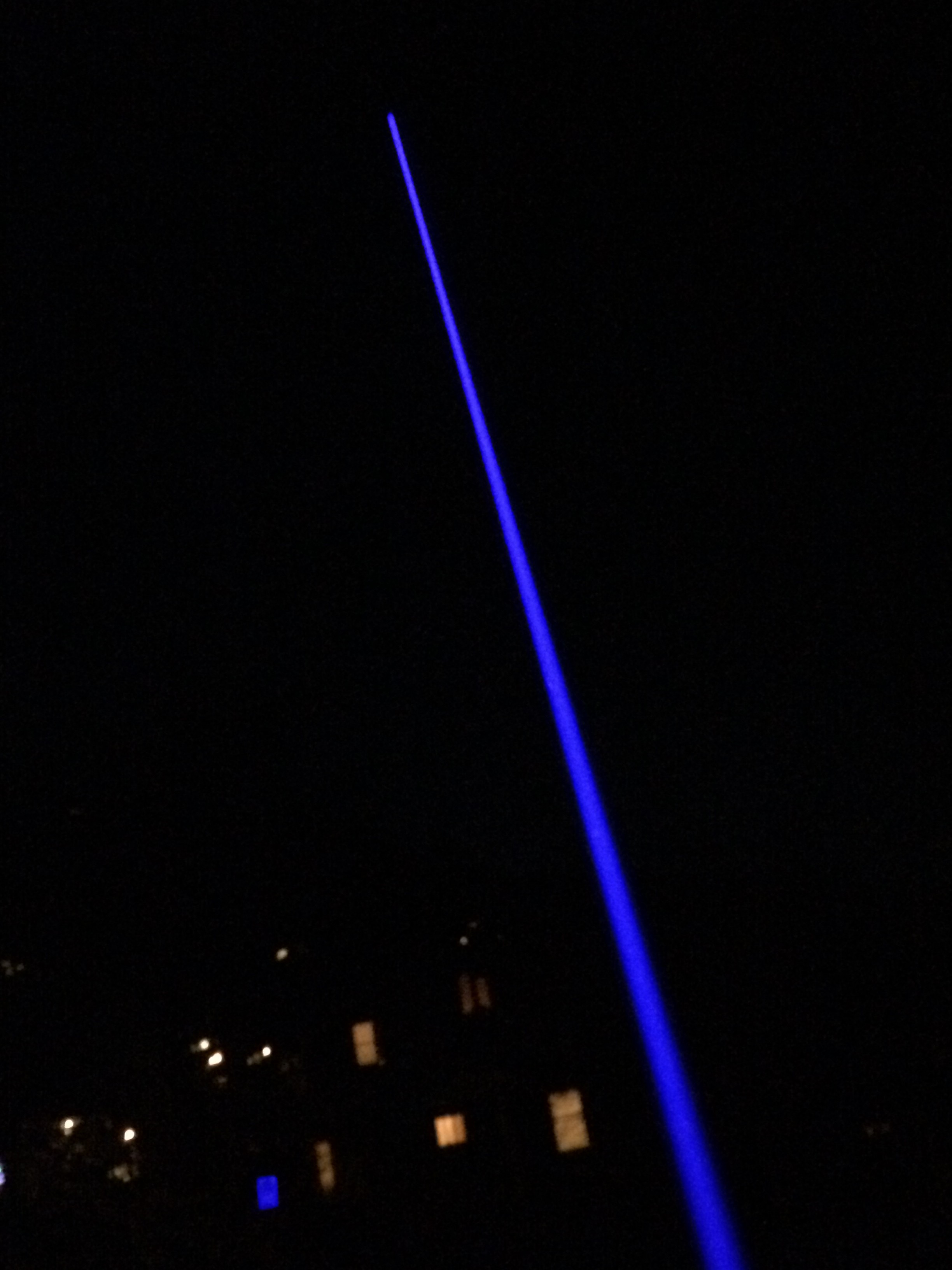- Joined
- Dec 30, 2016
- Messages
- 1,409
- Points
- 0
Why does the beam seem to stop abruptly at some point ?



Follow along with the video below to see how to install our site as a web app on your home screen.
Note: This feature may not be available in some browsers.




But it's still viewable, right?Could you try and resize your picture? It is awfully big :undecided:
-Alex
I think I need to do a "einstein thought experiment" to get my head around this ! lolIt has to appear to end some time right? It's like an asymptotic type thing. The closer you are to the axis of the beam the end of the beam compresses closer and closer. Imagine drawing it out with your mind. Otherwise the beam would appear to bend.
But it's still viewable, right?
This may sound ridiculous but, diachi, before you say that I'm crazy here me out.......assuming you'll say I'm crazy.
Notice when you point the beam at long distances on level ground, for example at a mountain ten miles away, you don't see the dot on the mountain. There is math to back this up, of which I can't do but have seen and heard people talk about. When you look from directly behind the laser, the beam is squashed. For example hold a pencil at an angle with one eye open and it will look short. But the pencil only looks short. If you were to stand at a observe the beam at a different angle, say 500 feet from the laser but still looking at the mountain where the laser hits the mountain, you would see a longer beam than if you were standing behind the laser, until eventually the dot would be no longer obscured and you would see it on the mountain. I've actually done this experiment and found it to be true. The beam seems to get longer, the bigger the angle between the laser beam and the observer. Until basically you hit are looking at the beam perpendicular and that is as much of the beam as you can see. But as the beam goes into the distance it exponentially looks more and more compressed. Say at the beginning of the beam what looks like a half of the visible beam is 1000 feet into the air. Well the closer you get to the end, what appears to be perhaps the last 30 percent or less (I don't have the math just guessing here) in reality is closer to 100% of the beam and that first 1000 feet was a measily amount.
The beam has to appear to send somewhere. If it didn't it would basically have to be a curved beam. Even if you were holding a pole that was infinitely long it would appear to send right? Because if you pointed it into the sky slightly to the right, you wouldn't see it way over on the other horizon that far to the right, no you'd see it continue in the straight path it was taking until it looked compressed to infinity.
I hope this doesn't sound ridiculous. I'm just repeating what a laser technician and a math and physics professor told me. It makes sense though.
My guess is the thinner DPSS beams don't hide themselves quite as much and so appear to travel slightly further before the infinite compression happens.

Why does the beam seem to stop abruptly at some point ?
Bad reasoning because if you point the laser horizontally at low mountains the beam fades off before it hits them. However as you move away from the axis of the beam the beam appears to extend until it touches the mountain.My understanding is due to having less particles at higher altitudes, that and the other factors already mentioned.
Laser Pointer Safety - Why laser beams outdoors seem to end

